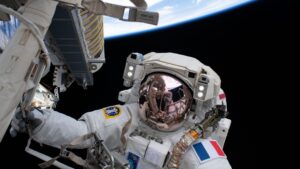Europe considering concepts for human spaceflight
By Jeff Foust

WASHINGTON — A bumper crop of applications for the European Space Agency’s astronaut corps is providing a boost to proposals for Europe to develop its own human spaceflight capability.
ESA announced June 23 that it received 22,589 applications in a solicitation that ended June 18. That’s far more than the 8,413 applications it received in the previous astronaut selection round in 2018.
“Having more than 22,000 applicants is quite a number,” Josef Aschbacher, ESA director general, said in a press conference about the application figures. “This is, I would call it, almost a historic moment for us that we have so many applicants that want to become astronauts. From that point of view, I’m more than satisfied. I’m extremely thrilled by these numbers.”
ESA will now start the process of evaluating the applications and narrowing the field. ESA officials said at the briefing that, despite some delays caused by the pandemic, they expect to complete the astronaut selection process by the end of 2022.
The agency plans to select four to six career astronauts who will join the ESA astronaut corps and be eligible for missions such as long-duration stays on the International Space Station and Artemis missions to the moon, flying on vehicles provided by NASA. ESA also will select up to 20 “reserve” astronauts who could be called up for any missions of opportunity that arise.
Asked if that strong interest in the astronaut selection campaign might translate into additional opportunities, Aschbacher mentioned his desire for a European “space summit” next year to discuss potential new flagship programs, including human spaceflight.
“We hope that politicians at the top level will stand up and say, look, we have noticed that many nations are going into space and have their own astronauts,” he said, citing the United States, Russia and China, as well as India’s efforts to develop its own human spaceflight capability. “What I would really like to raise is, what does Europe want in terms of exploration? Where does Europe want to stand in this international landscape?”
At the Paris Air Forum June 21, Aschbacher was more direct about considering an indigenous human spaceflight capability. “We have the expertise. We can build human-rated spacecraft,” he said. “But if we are not investing, we will be thrown out of the race.”
He compared the lack of funding for human spaceflight in Europe to squandered investments in information technology in Europe that, he argued, caused it to fall behind the United States and China. “This, for me, is a huge danger,” he said. “It cannot be that an economic power, a political power like Europe, which is comparable to the U.S. and China more or less, is not capable today of flying its own astronauts to space.”
There are studies in Europe looking at how to develop a human spaceflight capability. At the Global Space Exploration Conference in mid-June, Christophe Bonnal, a senior expert at the French space agency CNES, discussed ongoing work by the agency examining how to launch crewed spacecraft from French Guiana using the Ariane 6 rocket.
While Bonnal said the study was not a formal program proposal, he echoed arguments made by Aschbacher about why Europe needed a human spaceflight capability. “Europe shall acquire its autonomy in human spaceflight or else Europe will be marginalized as a 21st century space power,” he said. Europe wants to be a major partner in international space activities, but “this is highly questionable without autonomous human spaceflight.”

The CNES study looked at several options, including partnering with India on its Gaganyaan spacecraft or working with a U.S. company, Sierra Space, on a crewed version of its Dream Chaser vehicle. The study ultimately settled on a capsule design, using a service module like the one developed for the ATV cargo spacecraft and adapted for NASA’s Orion crew vehicle. The capsule would glide back to Earth using a parafoil, an approach ESA is using for its uncrewed Space Rider spacecraft.
Bonnal said using the Ariane 6 is a “credible” vehicle for launching a crewed spacecraft. “We believe it’s probably safer than an Ariane 5,” which itself was designed to launch a crewed spaceplane called Hermes, a program canceled by ESA three decades ago, several years before the first Ariane 5 launch.
He offered a schedule that called for proceeding with a two-year design study in 2022 at the next ESA ministerial meeting, followed by a final decision to proceed on development in 2024. A first uncrewed test flight of the capsule would take place in 2028 and a first crewed flight in 2030.
He declined to give specific cost estimates for the program, saying they were still under evaluation. But the overall program, he suggested, would be less than two euros per year per European citizen, a total cost that would be several billion euros even if the program remains on schedule.
“Yes, the money needs to be organized, but there’s a huge fallout, a huge benefit in all segments of the economy, which are enormous,” Aschbacher said at the Paris Air Forum. “I think politicians at top levels will realize that this is something that Europe needs, or otherwise, if Europe doesn’t do it, Europe will fall behind as a world economic power or as a political player on the world stage.”
June 29, 2021 at 08:40AM
via SpaceNews read more...

Post a Comment